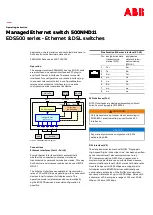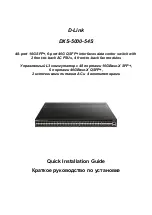
AVG-UHD4K-88
Command
Function
Feedback
Example
outputs, N means there is no
display,
Y
means
there
is
connected display.
Connect Y Y N N
Out 5 6 7 8
Connect Y Y N N
%9973.
Check the inputs HDCP status, N
means it’s not with HDCP, Y
means it’s with HDCP.
In 1 2 3 4
HDCP N Y Y N
In 5 6 7 8
HDCP N Y Y N
%9974.
Check the outputs HDCP status,
N means it’s not with HDCP, Y
means it’s with HDCP.
Out 1 2 3 4
HDCP N Y Y N
Out 5 6 7 8
HDCP N Y Y N
%9975.
Check the I/O switch status.
In 1 2 3 4
Out 1 2 3 4
In 5 6 7 8
Out 5 6 7 8
%9977.
Check the status of digital audio of
all outputs, N is for “off”, Y is for
“on”.
Out 1 2 3 4
Audio N N Y Y
Out 5 6 7 8
Audio N N Y Y
5.2.4 EDID Management
The AVG-UHD4K-88 ships with a convenient EDID management table to facilitate
effective communication between the displays and sources.
In factory default status (Status: 0000), the AVG-UHD4K-88 passes through the
signals directly, input & output devices process the signal automatically. You can
recall other saved EDID data by adjusting the 4-pin EDID DIP switcher or sending
the corresponding RS232 commands.
5.2.4.1 Via RS232 commands
Dial the switchers to “1111” to enable software EDID management.
Recalling embedded EDID data:
Send command “
EDID[X]B[y].
” to enable the input to recall the embedded EDID
data of the AVG-UHD4K-88 . For example, send “
EDID[4]B[3]
” , the INPUT device
(4) will gain embedded EDID data is that
720P 2D 2CH.
EDID Copy
:
Send the command “
EDIDM[X]B[y].
” to enable the input to copy the EDID data of a
display. For example, send “
EDIDM[1]B[5]
” , the INPUT device (1) will gain the
EDID data from OUTPUT device(5).
















































